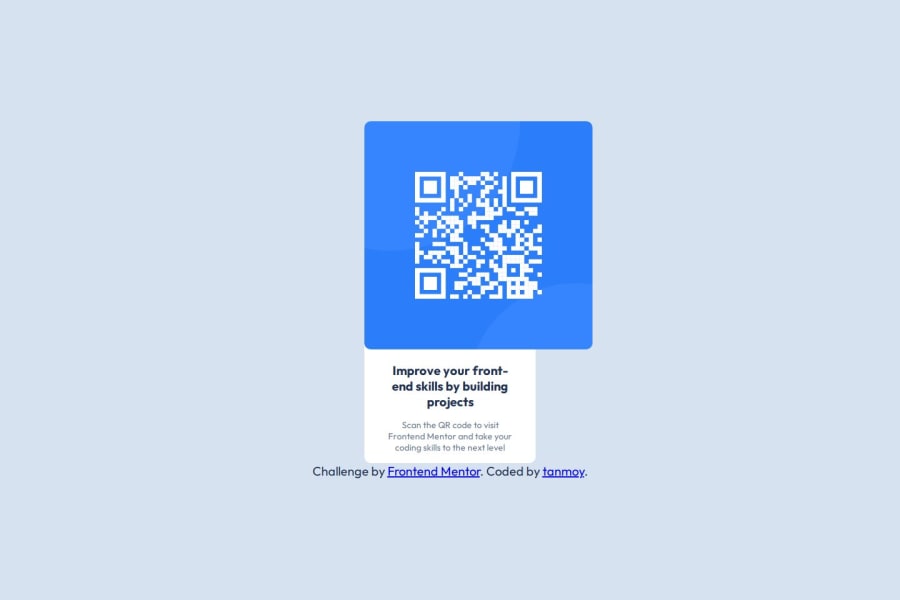
Design comparison
Community feedback
- @StroudyPosted 2 months ago
Amazing job with this! You’re making fantastic progress. Here are some small tweaks that might take your solution to the next level…
-
Using a
<main>tag inside the<body>of your HTML is a best practice because it clearly identifies the main content of your page. This helps with accessibility and improves how search engines understand your content. -
Avoid using
idselectors for styling in CSS because they are too specific and hard to override, making your styles less flexible and maintainable. Instead, use class selectors (.), which are reusable and more manageable, allowing for better control over your styles and easier updates. -
For future project, You could download and host your own fonts using
@font-faceimproves website performance by reducing external requests, provides more control over font usage, ensures consistency across browsers, enhances offline availability, and avoids potential issues if third-party font services become unavailable. Place to get .woff2 fonts -
Using
remoremunits in@mediaqueries is better thanpxbecause they are relative units that adapt to user settings, like their preferred font size. This makes your design more responsive and accessible, ensuring it looks good on different devices and respects user preferences. -
While
pxis useful for precise, fixed sizing, such asborder-width,border-radius,inline-padding, and<img>sizes, it has limitations. Pixels don't scale well with user settings or adapt to different devices, which can negatively impact accessibility and responsiveness. For example, usingpxfor font sizes can make text harder to read on some screens, Check this article why font-size must NEVER be in pixels. In contrast, relative units likeremand adjust based on the user’s preferences and device settings, making your design more flexible and accessible. Usepxwhere exact sizing is needed, but prefer relative units for scalable layouts. If you want a deeper explanation watch this video by Kevin Powell CSS em and rem explained. Another great resource I found useful is this px to rem converter based on the default font-size of 16 pixel.
You’re doing fantastic! I hope these tips help you as you continue your coding journey. Stay curious and keep experimenting—every challenge is an opportunity to learn. Have fun, and keep coding with confidence! 🌟
Marked as helpful0@Tanmoy-compilingPosted 2 months ago@Stroudy It was really helpful I will apply it right now.
1 -
- @SvitlanaSuslenkovaPosted 2 months ago
You could start to write your css from adding to div class card (should be <main>) padding, width and max-width. With that image could be just with width:100% and height: auto.
1 - @LaylaFePosted 2 months ago
Crie uma classe em CSS e adicione o código para centralizar a imagem ao centro e um PAD para afastar da borda superior.
No BODY coloque width:100%:
body { font-family: 'Outfit', sans-serif; background-color: var(--slate-300); color: var(--slate-900); display: flex; justify-content: center; align-items: center; flex-direction: column; font-size: 20px; height: 100vh; width:100%; } .img { display: flex; align-items: center; justify-content: center; padding-top: 1rem; }Adicione essa classe em uma div.
<div class="img"> <img src="images/image-qr-code.png" alt="QR Code"> </div>0
Please log in to post a comment
Log in with GitHubJoin our Discord community
Join thousands of Frontend Mentor community members taking the challenges, sharing resources, helping each other, and chatting about all things front-end!
Join our Discord
